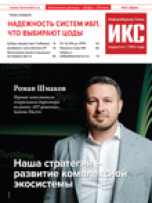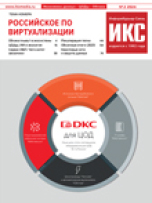| Рубрикатор |  |
 |
| Все новости |  |
World News |  |
 |
Broadband, The Next Generation
| 03 декабря 2008 |
Nokia Siemens Networks (NSN) laid claim to the world’s first demonstration of what some think will be the next generation of wireless broadband: LTE-Advanced.
LTE-Advanced reportedly can provide 1 Gb/s bandwidths, or roughly 10 times that promised by the forthcoming LTE and between 25 and 50 times what IEEE 802.16 (WiMAX) says it can do.
NSN didn’t reveal its achieved bandwidth. Rather, it said its demonstration was of the so-called “relaying technology” proposed for LTE-Advanced. That technology is claimed to eliminate the need for additional backhaul in a LTE network. NSN says the demonstration, at its research facilities in Germany, “illustrated how advances to relaying technology can further improve the quality and coverage consistency of a network at the cell edge – where users are furthest from the mobile broadband base station.”
“Demonstrating improved cell edge and indoor-user data rates is an important milestone for coverage scenarios,” says NSN CTO Stephan Scholz. “It further strengthens the position of LTE as the major mobile broadband technology.”
With that technology, he continued, LTE-Advanced users “will enjoy an even richer user experience thanks to higher throughput everywhere in the cell, while operators will be able to deploy their networks in a more flexible and cost-efficient way.”
Discussing some of the technical details of its achievement, NSN said it had combined an LTE system supporting a 2x2 Multiple Input Multiple Output (MIMO) antenna system, and a relay station. The relaying operates in-band, it explained, which means the relay stations inserted in the network do not need an external data backhaul. Rather, they are connected to the nearest base stations by using radio resources within the operating frequency band of the base station itself. To the terminal, they are base stations and offer the full functionality of LTE.
At this point, what NSN is demonstrating obviously is a long way from being a commercial technology, because LTE itself isn’t expected to start rolling into the marketplace until the end of next year. And LTE is Third Generation Partnership Project (3GPP) Release 8. LTE-Advanced currently is being studied by 3GPP for Release 10, for which a standardization timetable has not been set.
However at a workshop in Shenzhen, China, earlier this year, a broad outline of the goals for LTE-Advanced were agreed. Some of those goals include:
-
Backward compatibility;
-
A focus on low-mobility users to reach ITU-Advanced data rates;
-
Use of channel bandwidths beyond 20 megahertz currently standardized for LTE;
-
An increase in the number of antennas for MIMO beyond what currently is specified in LTE;
-
A combination of MIMO and beamforming technology;
-
Further increases in VoIP capacity;
-
Improved cellular edge data rates; and Improved network self-configuration.
As a matter of interest, whenever somebody claims a first, there’s sure to be someone else who tries to rain on the parade. This parade is no different. In February 2007, NTT DoCoMo announced the completion of a 4G demonstration where it achieved a maximum packet transmission rate of approximately 5Gb/s downstream using 100 megahertz of bandwidth to a mobile station moving at 10 kilometers per hour. That arguably could be called the first demonstration of LTE-Advanced, except for the fact that (back then) there wasn’t even a preliminary definition of what LTE-Advanced would look like.
Источник: http://telecomweb.com
Читайте также:
Ключевые задачи Минцифры Казахстана обсудили на заседании Общественного совета
билайн завершил масштабную модернизацию сети в Московской области
МегаФон ускорил мобильный интернет на востоке Москвы с помощью технологии MIMO
МегаФон подключил к 4G экономическую зону «Дубна» в Подмосковье

















Оставить свой комментарий:
Комментарии по материалу
Данный материал еще не комментировался.